The wind in the novel becomes a symbol of the desire for peace , blowing through the pain, connecting the two banks of the border. The Ben Hai River and the Hien Luong Bridge - the painful symbol of separation - are recreated as evidence of the desire for reunion. With profound experience from the battlefield, Xuan Duc has created a touching picture, affirming a truth: the wind still blows through the two banks of Hien Luong, war cannot separate the hearts of the Vietnamese people.
Writer Xuan Duc is one of the classic writers of modern Vietnamese literature. With more than 20 years of fighting with guns on the fiery land of Quang Tri , he transformed the fierce experiences into emotional and authentic pages of literature. His first work, the two-volume novel "Wind Door", written about the people and the land on both sides of Hien Luong, was awarded the Vietnam Writers' Association in 1982. In 2007, he was awarded the State Prize for Literature and Arts for three works: The Man Who Doesn't Carry a Last Name , Wind Door and One-Legged Black Bronze Statue; In 2022, he was posthumously awarded the Ho Chi Minh Prize for Literature and Arts for the scripts: Obsession, Glimpses of People, Completed Mission and the drama collection Time Certificate . With those great contributions, he has left a strong mark in the hearts of readers and the country's literature.
“Cua Gio” is a massive novel consisting of two volumes and 42 chapters, realistically and movingly recreating the life and steadfast fighting spirit of the people in the Vinh Linh border area during the fiercest years of the resistance war against the US (1965-1968). With a literary style imbued with the breath of Quang Tri land, a simple yet profound narrative voice, “Cua Gio” has a strong realistic style, flexibly combining modern elements in structure, tone and psychological depth of characters, and is considered one of the ten outstanding works of literature in the period 1975-1985. “Cua Gio” deeply reflects historical reality, and is also a pioneering milestone in the post-war literary innovation. The local voice makes the work resonate like the echo of the homeland from unforgettable years.
Mr. Chan's family is a typical, symbolic slice of the silent yet great sacrifices of the Northern people during the war. Mr. Chan, a widower, lives with his three children: Quyen, Thin and Loi. Each of his children represents a perspective on the war, an aspect of life. Mr. Quyen, a fisherman, accepted the danger to join the supply team to Con Co Island, demonstrating the resilient and indomitable spirit of volunteerism of the Vinh Linh people. Ms. Thao, Mr. Quyen's wife, is the embodiment of a woman in the rear, both strong and weak, carrying within herself the fear of loss and the guilt of not being able to stop her husband. Loi, the youngest brother in the family, is the bond that connects the broken souls after the shock of the seemingly eternal loss of his older brother.
He carries within him the faith, aspiration and new vitality of a generation that follows, looking towards the future. Mr. Chan, the father-pillar, has the fate of a “broken river”, suffering loneliness and the feeling of being left behind in the resistance journey. Other characters such as Political Commissar Tran Vu, Tran Chinh, Commander Thuong, Battalion Commander Le Viet Tung, Commune Team Leader Cam, Ms. Thao and little Can,... all contribute to creating a panoramic picture of the life and fighting of the people in the border area. They are miniature models of a divided country but the people's hearts are never divided.
The symbol throughout the work is the image of wind, carrying the sound of life, of aspiration, of reunion. The wind blows through the front line, through all the devastation to remind the reader that: "The wind does not divide the Hien Luong banks". Through each chapter of the novel and the multi-dimensional character system, "Wind Door" appears as a vivid chronicle, a tearful but hopeful epic about the people and the Vietnamese nation in a painful and heroic era.
The novel “Wind Door” by Xuan Duc is an epic full of humanity, deeply recreating the tragedy of war and the strength of the Vietnamese people on the Vinh Linh-Quang Tri front line. Through typical chapters such as the first chapter, the last chapter and chapters 17, 21, 33... the author reflects the brutal reality of war, clearly depicting the qualities of many resilient people in the fight to regain life and dignity.
Right in the first chapter, we encounter the sound of the waves of Cua Tung, as if predicting the event. “Cua Tung Beach. One night in April 1965.” , “The sound of the waves crashing became heavier and heavier... the water hitting the rocks sounded like stumbling, then crawling up and running away. Stumbling again, getting up again, muttering curses again...” - the image of wind and waves is a natural landscape, a symbol of a turbulent, fierce reality. That is the prelude to the epic of the war to defend the country.
The sound of gunfire in the middle of the sea, the light of parachutes, the small bamboo boats rushing into the enemy ships' encirclement... all make the scene suffocating. In this chapter, the character of Ms. Thao appears as a symbol of the pain of women in the rear: "She held her child tightly to her chest as if she was afraid of losing that last comfort. Tears kept streaming down her face, wetting her hair" . That feeling is not only Thao's, but also the common voice of a whole generation of Vietnamese women during the war - those who silently endured loss and pain to stand firmer, more resilient, contributing to creating a solid rear like a steel rampart, giving strength to the front line to charge forward.
Quyen's unexpected return in the final chapter is a touching finale. The character of Mr. Chan - the father who seemed to have quietly accepted the pain of losing his son, was shocked by the news that Quyen was still alive. "He stood there, his eyes wandering as if he could no longer believe in anything more." The overwhelming joy, but accompanied by emotional concerns and moral responsibilities, is a true expression of a man who has experienced much pain and loss.
The war divided the banks of Hien Luong, turning the gentle Ben Hai River into a border dividing the country. However, that division could not separate the feelings and patriotism of the people of the two regions. Despite living in a state of separation, they still maintained their faith, loyalty and were ready to sacrifice for the aspiration of unifying the country. Love and loyalty are one of the consistent themes. In chapter 42, Thao returned to the front line, "visiting ", not simply a trip, but a journey of love and responsibility. She did not dare to promise but still silently sacrificed. Tung, the soldier, only dared to send "a note for Can", because "there is no note here to give as a gift... I am very sad, sister". Behind that simple handwriting is a deep layer of unspoken emotions.
In “Wind Door” , the characters’ psychology is deeply exploited, clearly showing the pain and strong desire to live. From Ms. Thao’s confused and vague feelings about Mr. Quyen’s survival, to her despair when she heard that he had passed away, she still had to get up and accept the truth to overcome it. The saying: “The wind still blows, I still live, even though everything is gone” is like a resilient mindset, a fragile comfort that she found within herself, even though it was still immersed in pain. Each character in the work carries within themselves their own feelings, they are not only victims of war but also people who strongly desire a peaceful future, cherish the dream of surviving and building a beautiful life, even though they are on the line between life and death.
The image of “wind” in the title is a natural element, a consistent symbol. The wind blows through the battlefield, blows through the shattered lives, the wind brings a sense of movement - life continues despite great loss. “The wind does not separate the two banks of Hien Luong” - a symbolic affirmation, expressing the truth: the country may be geographically divided but the people's hearts always turn to each other, feelings cannot be separated.
In the final chapter, life still rises, like the undying faith in the heart of the soldier, mother, and wife. “ I will live, I must live! Death must belong to them. Otherwise, how can there be truth in this life!” - Tung's determined whisper is proof of the indomitable spirit that never gives up.
“Wind Door” is the affirmation of writer Xuan Duc that: war cannot divide hearts that are loyal to the country. Characters such as Mr. Chan, Thao, Tung, Quyen ... all live in the belief that after pain there will be reunion, after separation there will be unity. The work is a prayer for peace, for a better tomorrow, where “Wind is no longer a cry but a song of reunion.”
Through more than 40 chapters, “Wind Door” tells a wartime story - it makes us feel, makes us cry, makes us believe that the Vietnamese people can overcome all tragedies thanks to love, faith and silent sacrifice.
The novel “Wind Door” by Xuan Duc makes a strong impression thanks to its poetic symbolic image system such as wind, river wharf, fields, letters, wife’s eyes... These images create an artistic space full of emotions, deeply reflecting the soul and fate of people in war. Xuan Duc’s pen is simple but profound, harmoniously combining harsh reality and lyricism, creating a unique style. His writing style is both authentic and imbued with emotion, contributing to portraying a masterpiece imbued with local identity and historical-human stature.
“Wind Door” is a heroic and tragic epic of the people in the border area during the fierce war years. Through the image of wind - representing freedom, vitality and faith. Xuan Duc has portrayed a profound message: people's hearts are like the wind connecting the two banks of Hien Luong, war cannot separate them. The image of wind in “Wind Door” is a symbol of freedom and vitality, evoking the desire for peace to spread everywhere, as musician Trinh Cong Son once wrote: "The wind of peace flies in all directions... the dawn illuminates the future".
Le Nam Linh
Source: https://baoquangtri.vn/gio-van-thoi-doi-bo-hien-luong-193381.htm


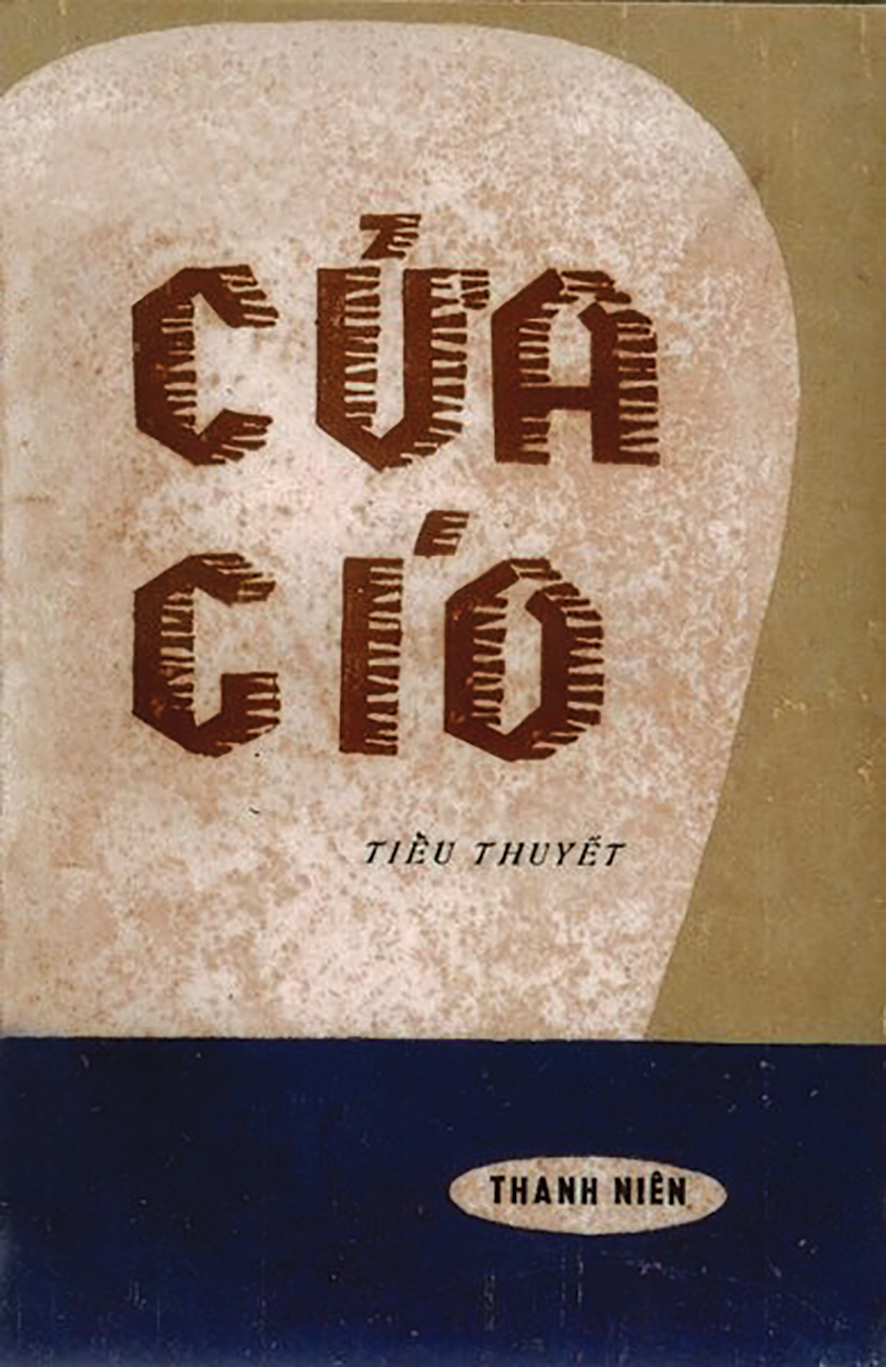
![[Photo] Ready for the top competitions of Vietnamese table tennis](https://vphoto.vietnam.vn/thumb/1200x675/vietnam/resource/IMAGE/2025/5/18/9c547c497c5a4ade8f98c8e7d44f5a41)

![[Photo] Many young people patiently lined up under the hot sun to receive a special supplement from Nhan Dan Newspaper.](https://vphoto.vietnam.vn/thumb/1200x675/vietnam/resource/IMAGE/2025/5/18/6f19d322f9364f0ebb6fbfe9377842d3)


![[Photo] Party and State leaders attend the special art program "You are Ho Chi Minh"](https://vphoto.vietnam.vn/thumb/1200x675/vietnam/resource/IMAGE/2025/5/18/6895913f94fd4c51aa4564ab14c3f250)



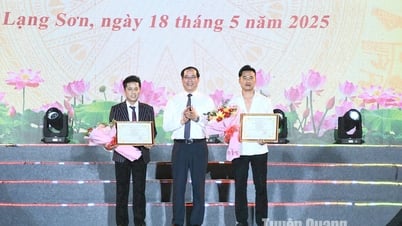



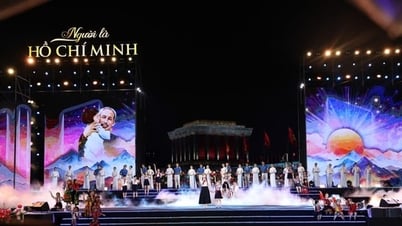

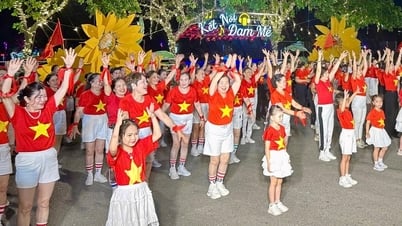

































































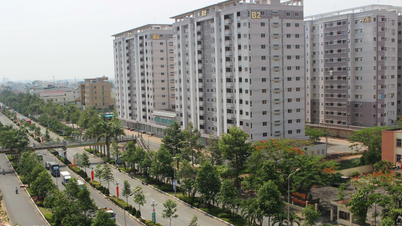










Comment (0)